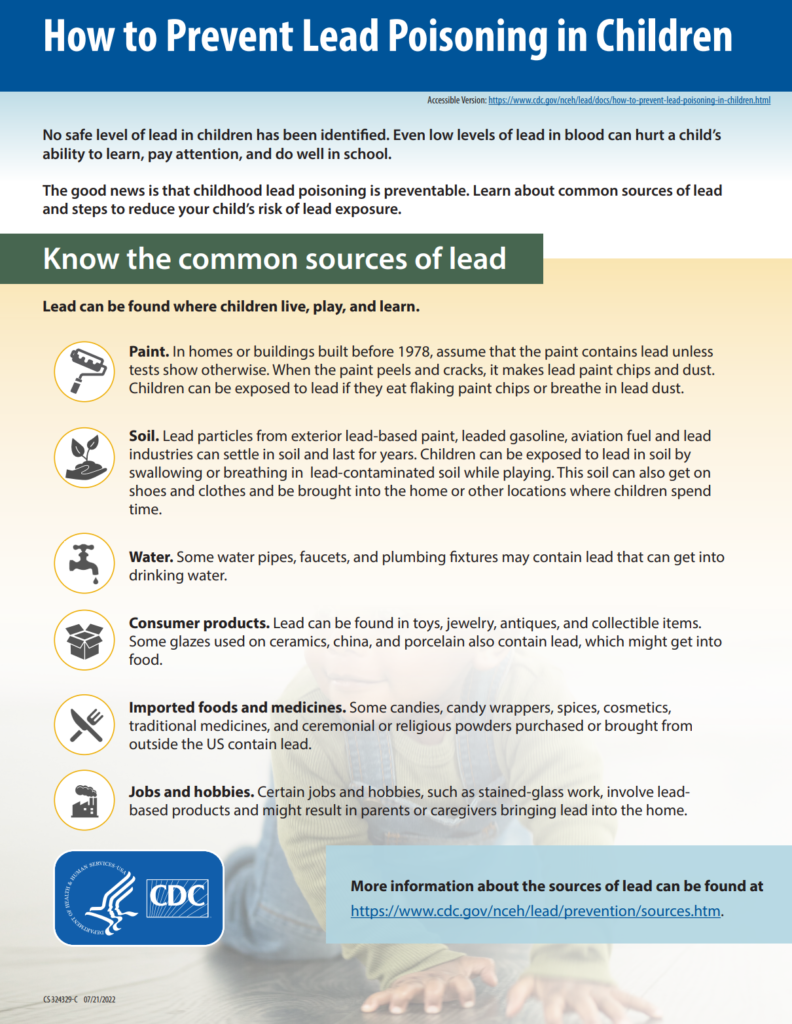
Both adults and children can be affected by high levels of lead in their blood. Symptoms may be mild and you may not know you have elevated levels of lead in your blood without a blood test. The effects of lead exposure increase as your blood level changes so early intervention can make a big difference.
Although lead is naturally occurring, it can be dangerous. Lead based paint is a common source of lead poisoning but is not the only way to be exposed to lead. Certain professions or hobbies can also increase your risk of lead exposure.
In many cases, you can lower lead levels with simple lifestyle changes. In some cases, you might need medical treatment. Eating a diet with lots of calcium, iron and vitamin C can help reduce lead levels.
High levels of lead can be especially dangerous for young children and women who are pregnant. For adults, lead can lead to high blood pressure or kidney issues. For children, lead can stunt their growth and cause learning problems.
If your child is on Apple Health/Medicaid they will be tested for lead at 12 and 24 months. You can request a lead test at any time.
If you have a blood test that shows an elevated lead level, you may need a second test to confirm the result. Once you begin treatment or lifestyle changes, you will need follow up testing to make sure the level is dropping.
Adults who frequently work with lead at a job or as a hobby may need to be tested for lead exposure.
Adults have a much higher threshold for what is considered an acceptable level of lead. If you are the parent or caregiver for a child and you frequently work with lead at work or as a hobby your child may need more frequent lead testing.
Talk to your healthcare provider to request a blood test to check for lead levels.
If anyone in your household has an elevated lead level, the other members of the household should also be tested.
Learn more about lead exposure, treatment and prevention strategies here.
